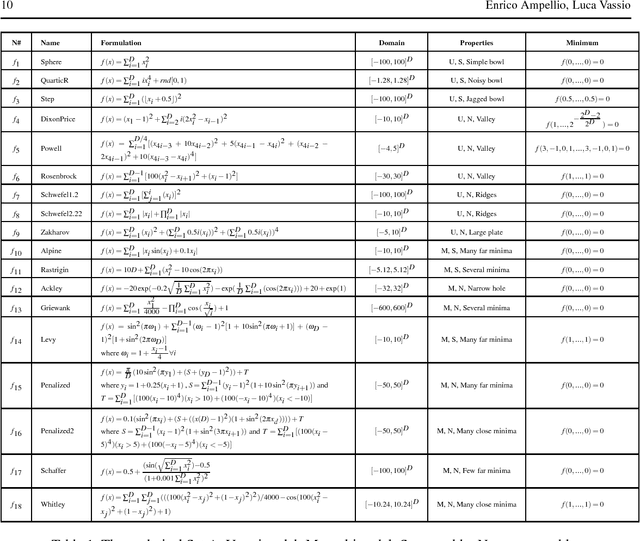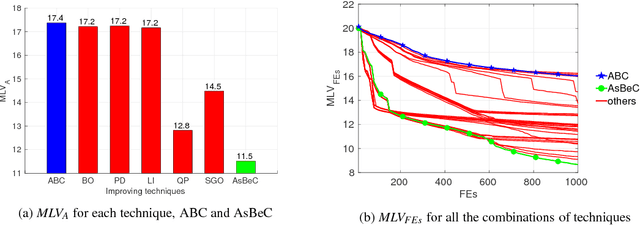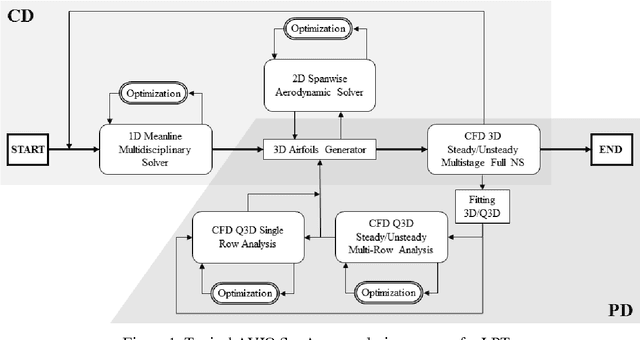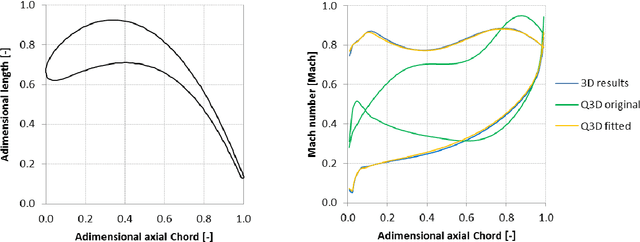Enrico Ampellio
Multi-level informed optimization via decomposed Kriging for large design problems under uncertainty
Oct 09, 2025Abstract:Engineering design involves demanding models encompassing many decision variables and uncontrollable parameters. In addition, unavoidable aleatoric and epistemic uncertainties can be very impactful and add further complexity. The state-of-the-art adopts two steps, uncertainty quantification and design optimization, to optimize systems under uncertainty by means of robust or stochastic metrics. However, conventional scenario-based, surrogate-assisted, and mathematical programming methods are not sufficiently scalable to be affordable and precise in large and complex cases. Here, a multi-level approach is proposed to accurately optimize resource-intensive, high-dimensional, and complex engineering problems under uncertainty with minimal resources. A non-intrusive, fast-scaling, Kriging-based surrogate is developed to map the combined design/parameter domain efficiently. Multiple surrogates are adaptively updated by hierarchical and orthogonal decomposition to leverage the fewer and most uncertainty-informed data. The proposed method is statistically compared to the state-of-the-art via an analytical testbed and is shown to be concurrently faster and more accurate by orders of magnitude.
A hybrid swarm-based algorithm for single-objective optimization problems involving high-cost analyses
May 02, 2016



Abstract:In many technical fields, single-objective optimization procedures in continuous domains involve expensive numerical simulations. In this context, an improvement of the Artificial Bee Colony (ABC) algorithm, called the Artificial super-Bee enhanced Colony (AsBeC), is presented. AsBeC is designed to provide fast convergence speed, high solution accuracy and robust performance over a wide range of problems. It implements enhancements of the ABC structure and hybridizations with interpolation strategies. The latter are inspired by the quadratic trust region approach for local investigation and by an efficient global optimizer for separable problems. Each modification and their combined effects are studied with appropriate metrics on a numerical benchmark, which is also used for comparing AsBeC with some effective ABC variants and other derivative-free algorithms. In addition, the presented algorithm is validated on two recent benchmarks adopted for competitions in international conferences. Results show remarkable competitiveness and robustness for AsBeC.
* 19 pages, 4 figures, Springer Swarm Intelligence
Multidiscipinary Optimization For Gas Turbines Design
Feb 03, 2014



Abstract:State-of-the-art aeronautic Low Pressure gas Turbines (LPTs) are already characterized by high quality standards, thus they offer very narrow margins of improvement. Typical design process starts with a Concept Design (CD) phase, defined using mean-line 1D and other low-order tools, and evolves through a Preliminary Design (PD) phase, which allows the geometric definition in details. In this framework, multidisciplinary optimization is the only way to properly handle the complicated peculiarities of the design. The authors present different strategies and algorithms that have been implemented exploiting the PD phase as a real-like design benchmark to illustrate results. The purpose of this work is to describe the optimization techniques, their settings and how to implement them effectively in a multidisciplinary environment. Starting from a basic gradient method and a semi-random second order method, the authors have introduced an Artificial Bee Colony-like optimizer, a multi-objective Genetic Diversity Evolutionary Algorithm [1] and a multi-objective response surface approach based on Artificial Neural Network, parallelizing and customizing them for the gas turbine study. Moreover, speedup and improvement arrangements are embedded in different hybrid strategies with the aim at finding the best solutions for different kind of problems that arise in this field.
 Add to Chrome
Add to Chrome Add to Firefox
Add to Firefox Add to Edge
Add to Edge